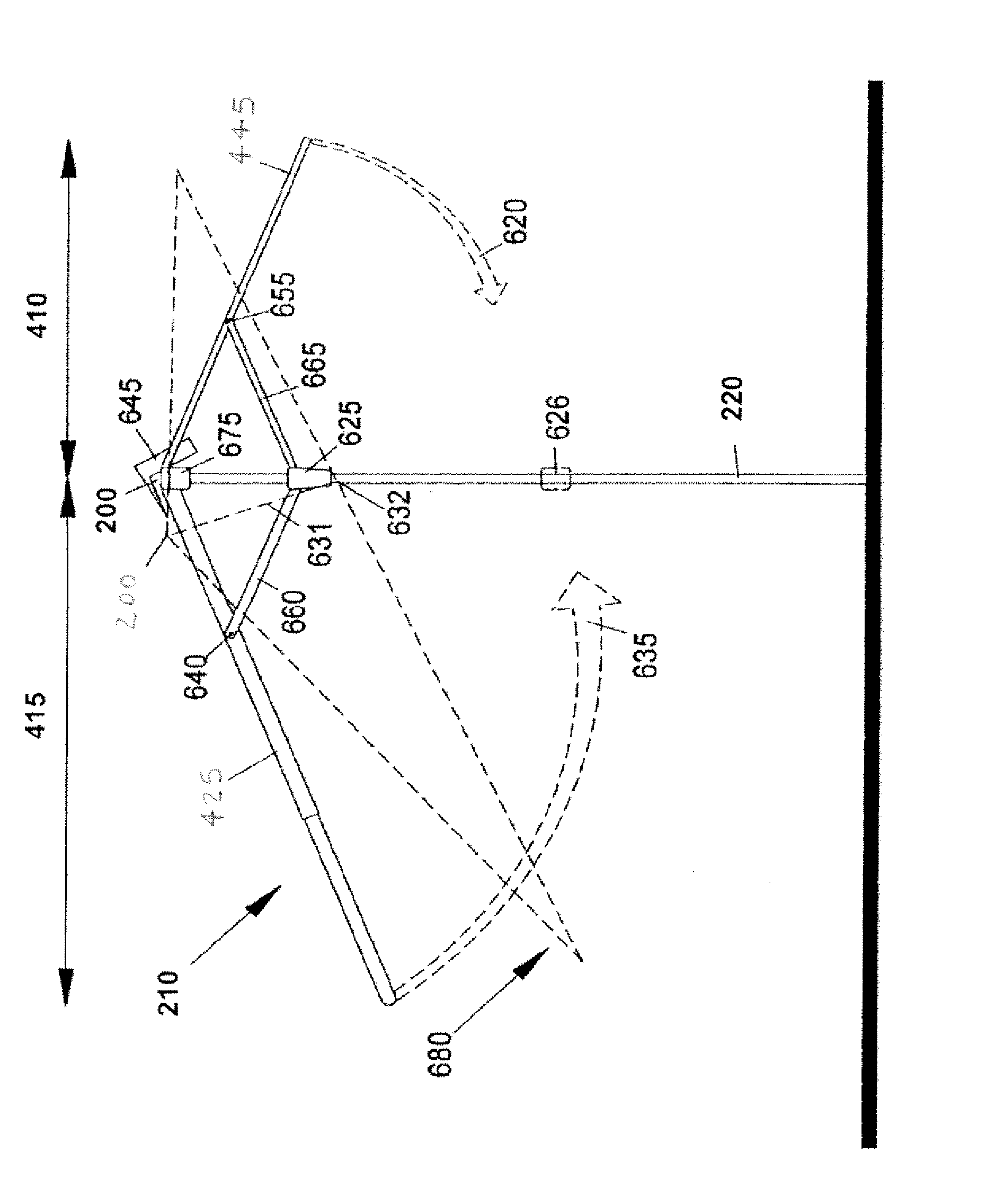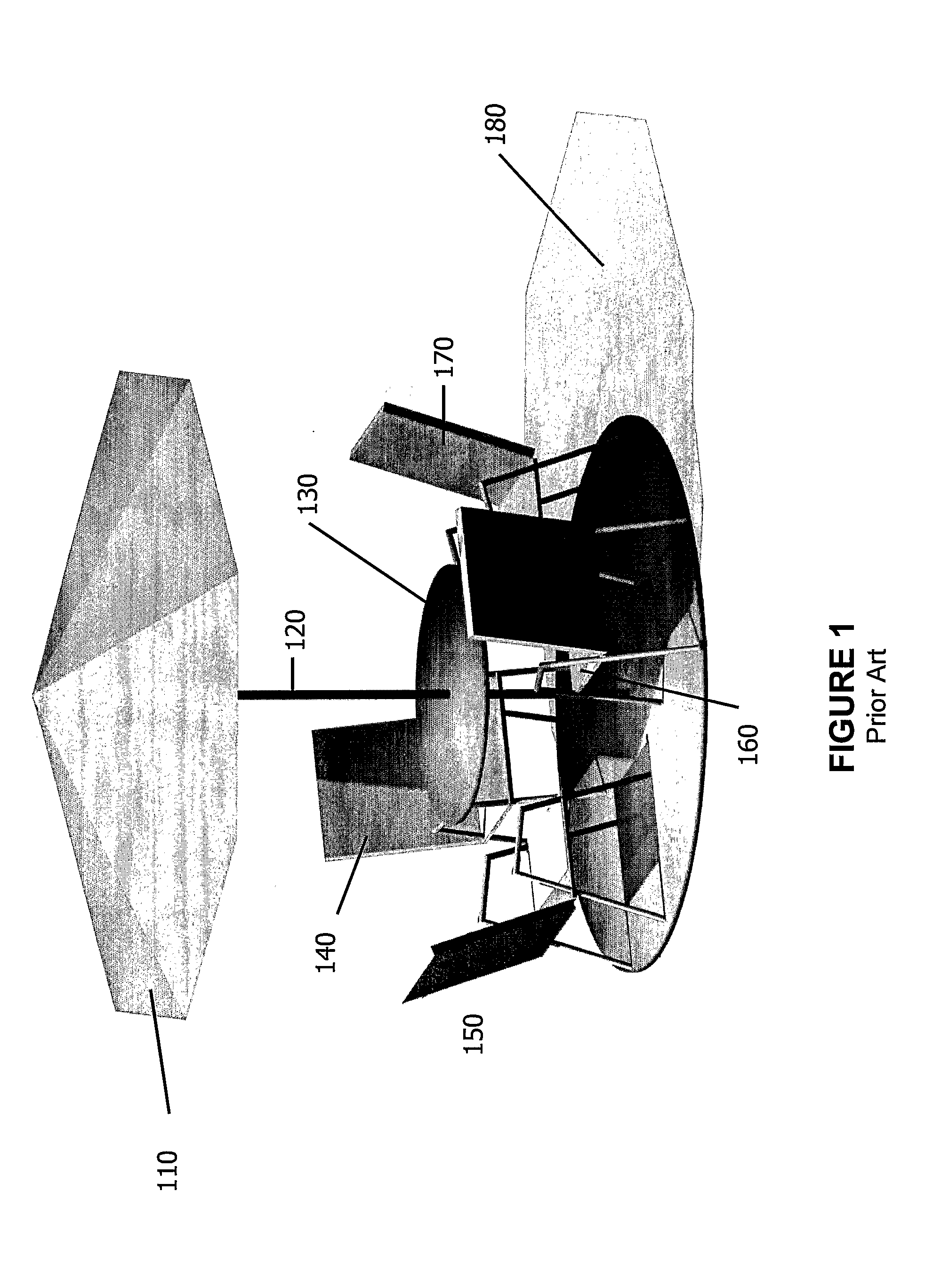Canopy for a stationary covering device having an asymmetrical shape
a technology of stationary covering and canopies, which is applied in the direction of umbrellas, walking sticks, parkings, etc., can solve the problems of asymmetrical shape of conventional canopies, inconvenient and effective security and protection, and devices that embody aesthetics
- Summary
- Abstract
- Description
- Claims
- Application Information
AI Technical Summary
Benefits of technology
Problems solved by technology
Method used
Image
Examples
Embodiment Construction
[0032]In the following description, numerous specific details are set forth in order to provide a thorough understanding of the invention. One skilled in the art would recognize, however, that the invention might be practiced without some or all of these specific details. In other instances, well known methods, procedures, and / or components have not been described in detail so as to not unnecessarily obscure the novel aspects of this invention.
[0033]The canopy for a stationary covering device in accordance with the present invention is intended to overcome the aforementioned shortcomings through a novel and original canopy design that provides convenient, effective and consistent outdoor protection to a fixed target area throughout the day. Briefly, the present invention provides such protection by a novel and unique approach that modifies the symmetrical shape of the conventional canopy to an asymmetrical shape in a stationary covering device. The canopy shape, according to the pre...
PUM
 Login to View More
Login to View More Abstract
Description
Claims
Application Information
 Login to View More
Login to View More - R&D
- Intellectual Property
- Life Sciences
- Materials
- Tech Scout
- Unparalleled Data Quality
- Higher Quality Content
- 60% Fewer Hallucinations
Browse by: Latest US Patents, China's latest patents, Technical Efficacy Thesaurus, Application Domain, Technology Topic, Popular Technical Reports.
© 2025 PatSnap. All rights reserved.Legal|Privacy policy|Modern Slavery Act Transparency Statement|Sitemap|About US| Contact US: help@patsnap.com



